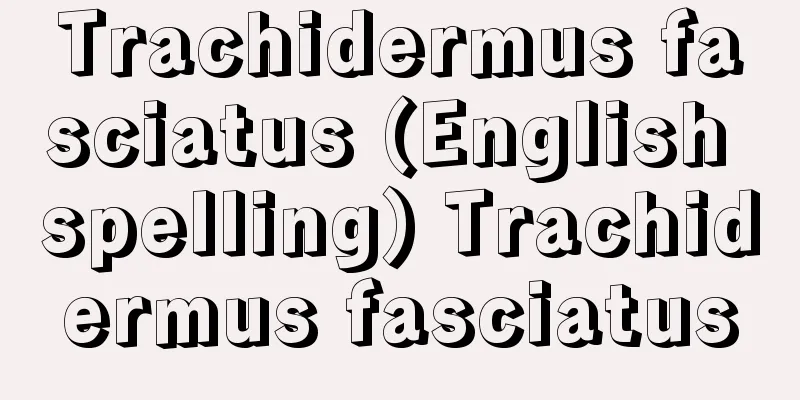Kongoji Temple

|
The head temple of the Omuro school of Shingon Buddhism, located in Amano-cho, Kawachinagano City, Osaka Prefecture. The mountain name is Mount Amano. It is the 7th sacred site in the new Western region. It was founded by Gyoki at the request of Emperor Shomu. It fell into disrepair at the end of the Heian period, but Akan Shonin of Mount Koya restored the temple buildings thanks to the deep devotion and protection of Emperor Goshirakawa. After it became a place of prayer for the Emperor's younger sister, Hachijo Nyoin (Fujiwara Shoshi), all ceremonies were held there in the same way as Mount Koya, and it became a sacred site where women could connect with Kobo Daishi (Kukai), and it has since come to be called Nyonin Koya. During the Nanboku-cho period, the sub-temple Mani-in was once the temporary residence of Emperor Go-Murakami, and was called Amano Angu or Amano Palace. Later, it was revered by successive emperors and devoted by military families, and under the protection of both the Toyotomi and Tokugawa families, the various buildings were restored and refurbished. There are many buildings and pagodas, and the bell tower, tower gate, dining hall, main hall, pagoda, Miedo, Kangetsu-tei, and Mani-in are designated as Important Cultural Properties of Japan. The temple treasures include a sword from the Heian period, the Engishiki Shinmeicho (list of Shinto deities) and the Engishiki (copies of national treasures), the triad of statues of Vairocana, Acala and Gozanze enshrined in the Kondo (traditionally made by Unkei), as well as Buddhist paintings such as the Sun and Moon Landscape Screen, the Five Secret Mandalas, a statue of Kokuzo Bosatsu and the Sonsho Mandala, as well as paintings, crafts, calligraphy, ancient copies of sutras, ancient documents and records. The temple grounds have been designated a national historic site and place of scenic beauty. [Masahiro Nomura] Source: Shogakukan Encyclopedia Nipponica About Encyclopedia Nipponica Information | Legend |
|
大阪府河内長野(かわちながの)市天野(あまの)町にある真言宗御室(おむろ)派の大本山。山号は天野山。新西国第7番霊場。聖武(しょうむ)天皇の御願(ごがん)により行基の草創。平安末期には一時荒廃したが、高野山(こうやさん)の阿観上人(あかんしょうにん)が後白河(ごしらかわ)法皇の厚い帰依(きえ)と庇護(ひご)によって堂塔を再興。また法皇の妹八条女院(藤原璋子(しょうし))の祈願所となってからは、いっさいの行事を高野山と同様にして、女性が弘法(こうぼう)大師(空海)に縁を結ぶ霊場としたため、爾来(じらい)、女人高野(にょにんこうや)と称されるようになった。南北朝時代には一時、塔頭摩尼院(まにいん)が後村上(ごむらかみ)天皇の行在所となり、天野行宮(あんぐう)、天野殿と称された。その後、歴朝の崇信、武門の帰依も厚く、豊臣(とよとみ)・徳川両家の保護を受け、諸堂の修復・再修がなされた。堂塔は多く、鐘楼、楼門、食堂(じきどう)、金堂、多宝塔、御影堂(みえどう)、観月亭、摩尼院は国の重要文化財である。寺宝には平安時代の剣、『延喜式(えんぎしき)神名帳』、『延喜式』(以上国宝)をはじめ、金堂安置の大日如来(にょらい)・不動明王・降三世(ごうざんぜ)明王の三尊像(伝運慶作)、および日月山水図屏風(びょうぶ)、五秘密曼荼羅(まんだら)、虚空蔵菩薩(こくうぞうぼさつ)像、尊勝曼荼羅図の仏画や、絵画、工芸、書蹟(しょせき)、古写経、古文書、記録などの国の重要文化財が数多く収蔵され、境内は国の史跡・名勝に指定されている。 [野村全宏] 出典 小学館 日本大百科全書(ニッポニカ)日本大百科全書(ニッポニカ)について 情報 | 凡例 |
Recommend
Omaezaki Lighthouse
This lighthouse is located in Omaezaki City, Shizu...
Cunliffe Committee
The Committee on Post-War Currency and Foreign Exc...
University of Strasbourg (English name: University of Strasbourg)
A university in Strasbourg, France. Its origins d...
Karakunidake - Karakunidake
It is the highest peak of the Kirishima volcano, ...
Nishi (spiny conch) - Nishi
It refers to snail shells that secrete mucus from ...
The Final Promise - Suenochigiri
Title of a jiuta/koto song. Kyoto-style tegotomono...
Oil pollution
The contamination of waters, especially the ocean,...
Iron dialect - Iron dialect
The eastern dialect of Ossetian language spoken in...
zambomba
…Percussion instruments include the tambourine (p...
Yorii [town] - Yorii
A town in Oosato County in northwest Saitama Prefe...
Branch - Eda (English spelling)
(1) Regarding graphs of curves When the graph of a...
Subduction zone - Subduction zone
Also called a subduction zone. A belt-like region ...
tuber
...Gladiolus, crocus, freesia, babiana, etc. (3)T...
Allowable stress design
...A general term for a method of designing a str...
Pressure coefficient
…In this case, not only the flow pattern but also...









